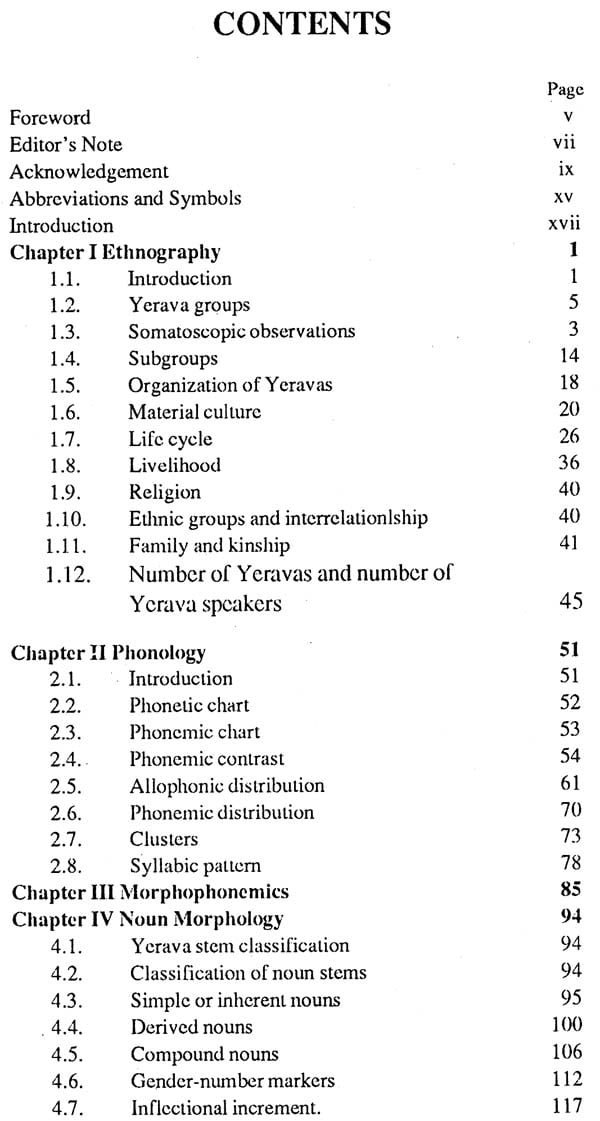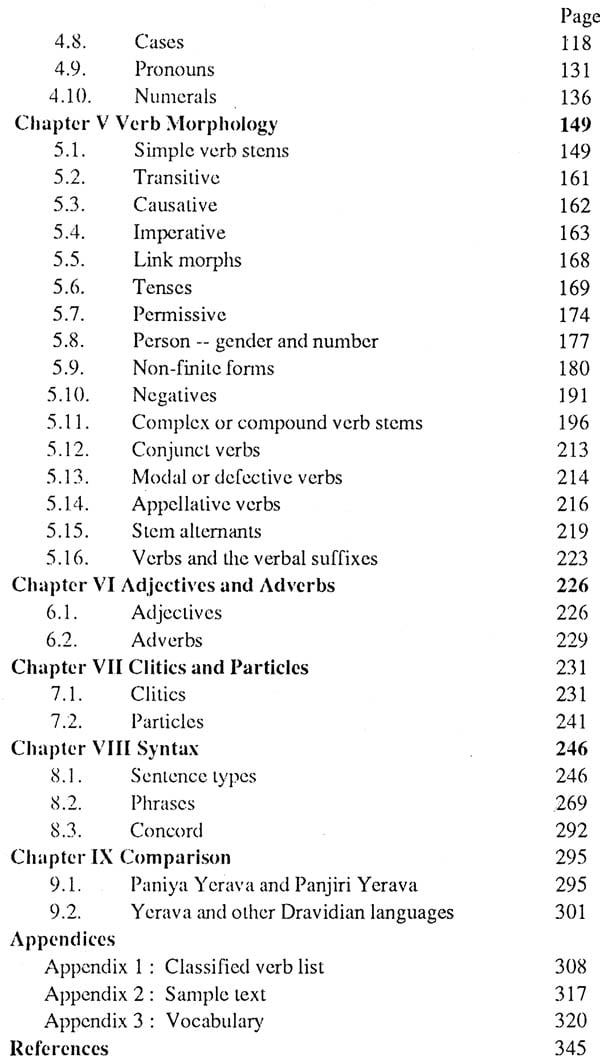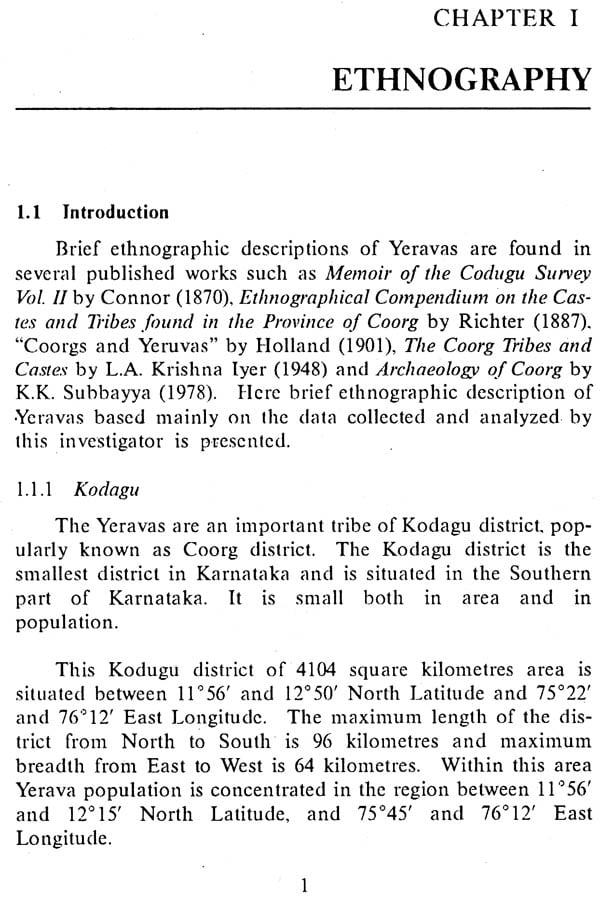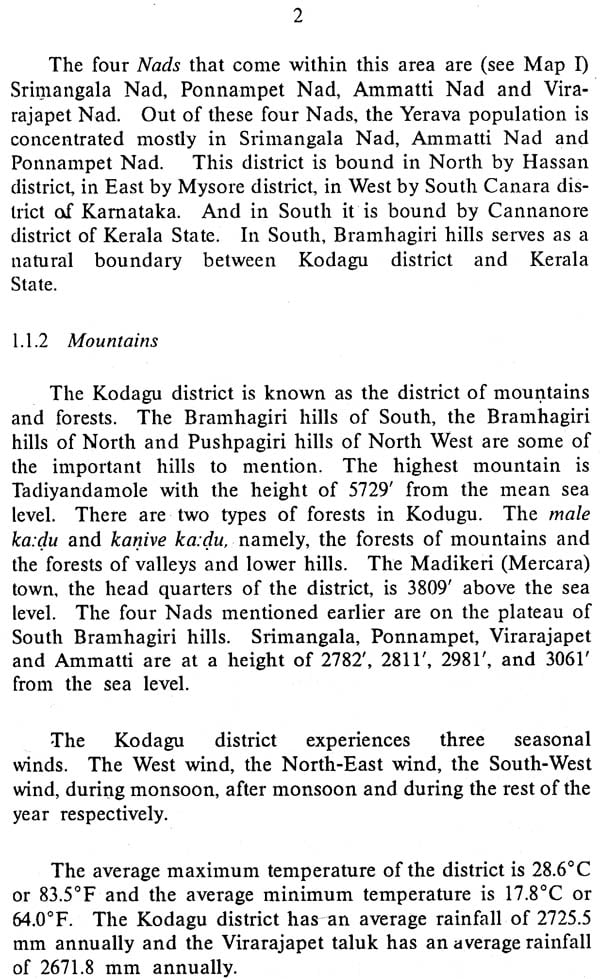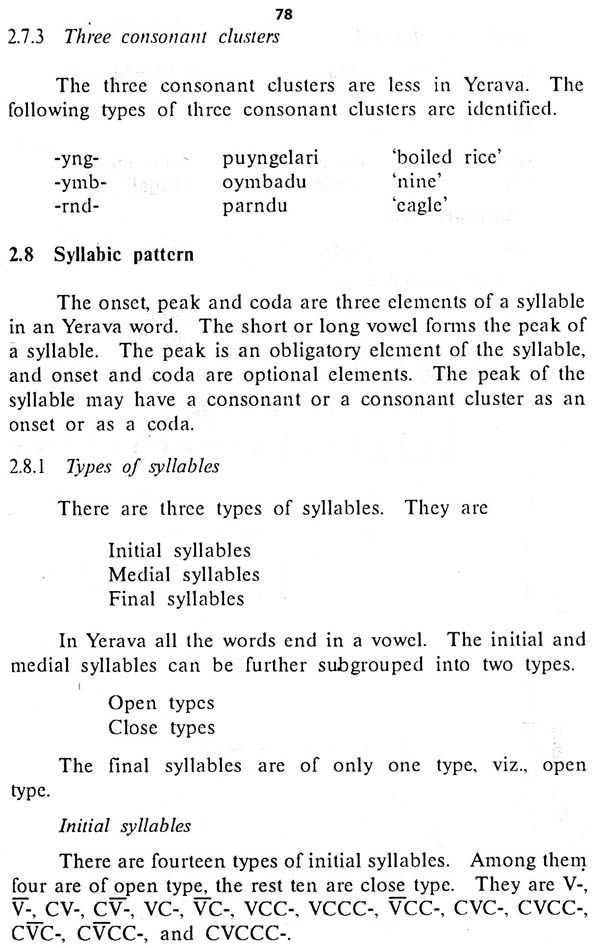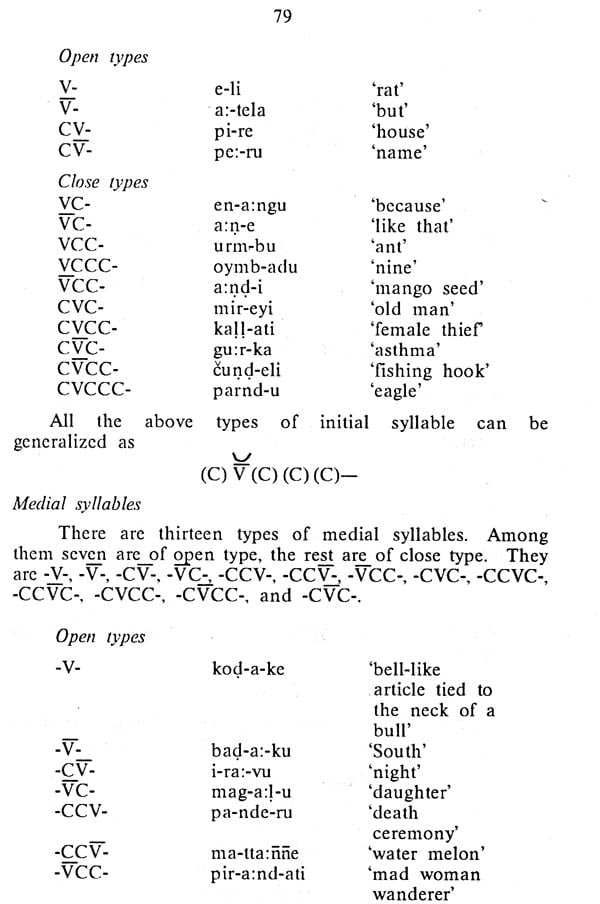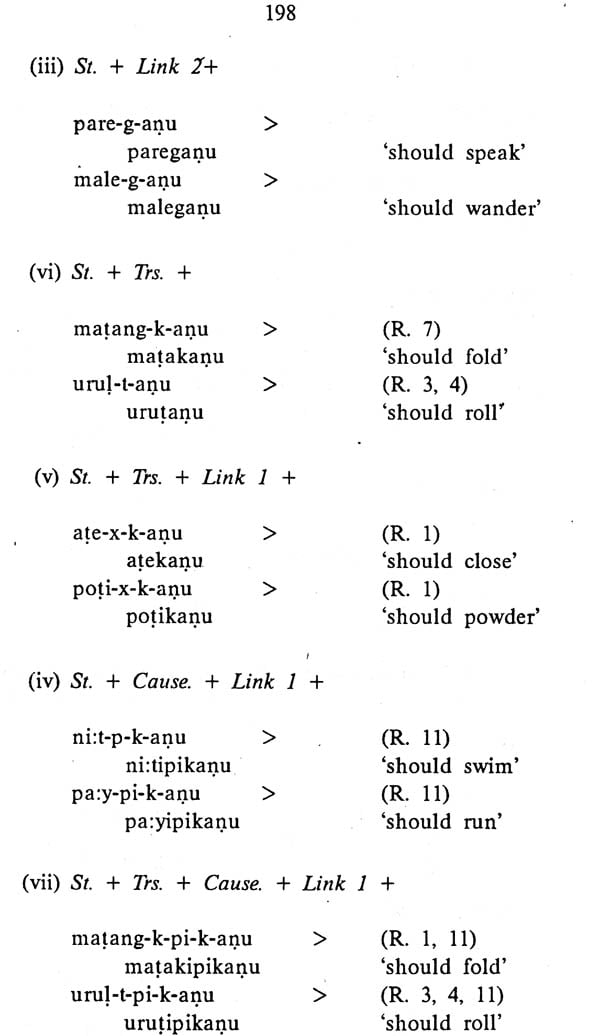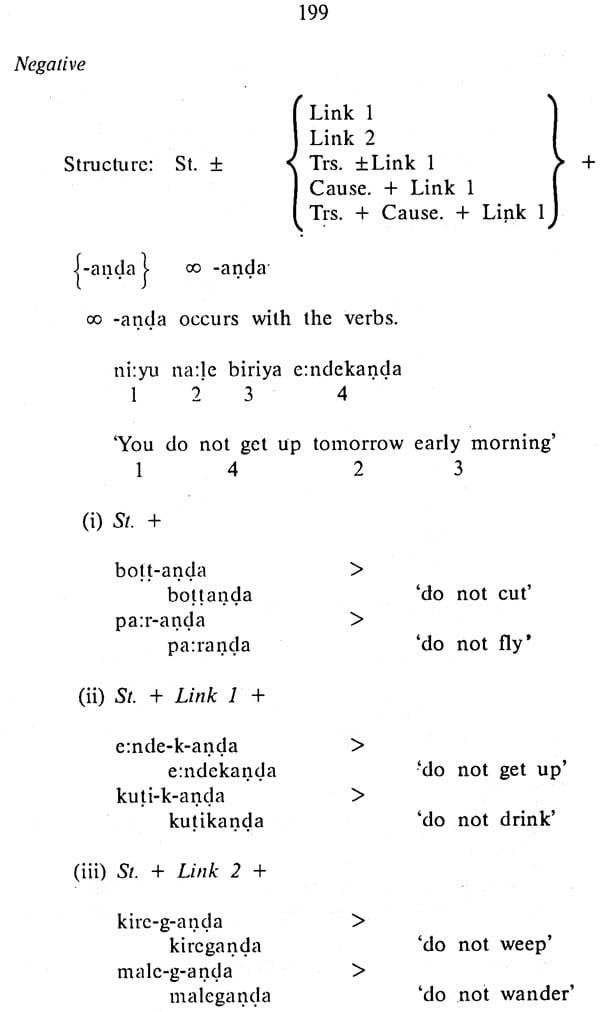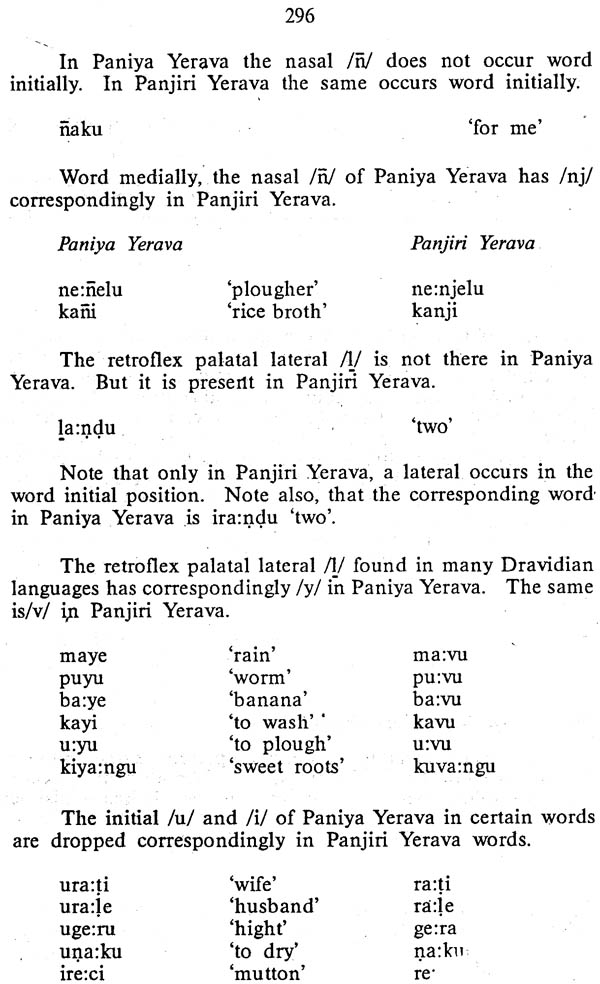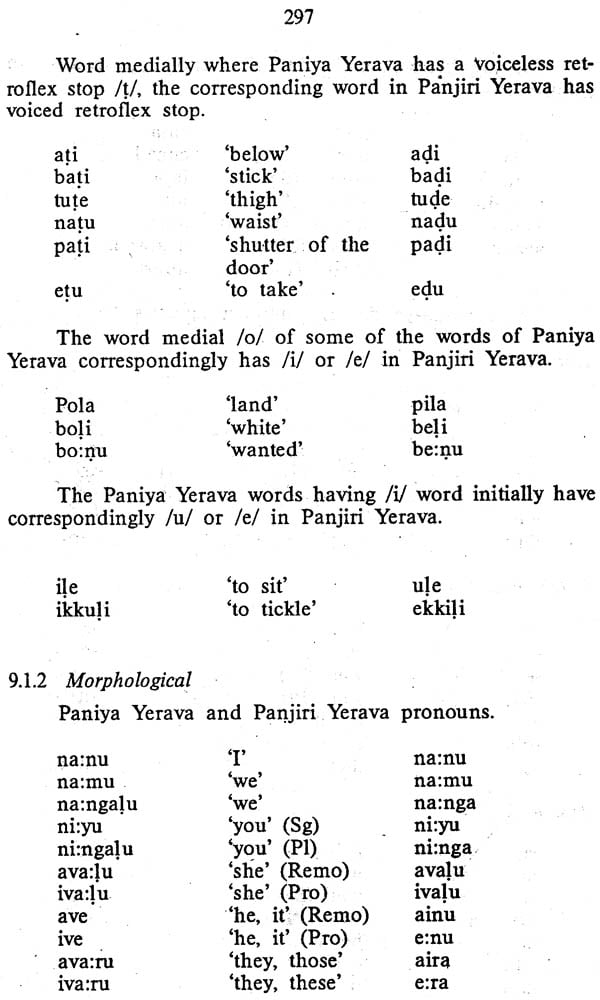
A Descriptive Analysis of Yerava
Book Specification
| Item Code: | NAW072 |
| Author: | B. Mallikarjun |
| Publisher: | Central Institute Of Indian Languages, Mysore |
| Language: | Yerava and English |
| Edition: | 1993 |
| Pages: | 376 |
| Cover: | PAPERBACK |
| Other Details | 8.50 X 5.50 inch |
| Weight | 340 gm |
Book Description
As an Institute under the Ministry of Human Resource Development, Department of Education, Government of India, the Central Institute of Indian Languages is charged with the responsibility of serving as a nucleus to bring together all the research and application work done on various Indian languages to a common purpose and to narrow the gap between the basic research and applications research in the field of languages and linguistics in India. In order to achieve this goal the Institute brings out research monographs, instructional materials, maps audio visual materials, computer software, etc., as part of its publication programme.
PhD. theses are one of the sources of new knowledge. Most of these theses however do not get wider dissemination. Several important findings made in the PhD. dissertations do not reach other investigators resulting in duplication and lack of progress in research.
The CHL, charged with the development of Indian languages, has also the responsibility of dissemination of research on Indian languages.
With these objectives the CIIL is introducing a new series of publications called Doctoral Dissertation Scrims. It intends to publish doctoral research work of high quality in linguistics and related fields, which has direct relevance to the research, material production and training programmes of the Institute. This will be very selective and limited in number.
The present book, A Descriptive Analysis of Yerava, describes in detail the phonology and morphology of the Yerava language. It also gives a brief ethnographic description of the community and discusses the place of Yerava in the Dravidian family. This study adds to the current knowledge about Dravidian languages.
I hope that this dissertation will stimulate further research in the area and will be useful for applicational work for the development of Indian languages.
This dissertation presents a description of Yerava based on Paniya Yerava speech, following the Neo Bloomfieldian model. Another and in all probability the only other, section of Yerava, with a distinct speech of its own is Panjiri Yerava. Both the sections of Yeravas are in Kodagu, Karnataka.
The first chapter on Ethnography has twelve sections in which the geographical description of area where Yerava are living, the groups and sub-groups of Yerava, the name of the tribe, the origin and migration, population and distribution, somatoscopic observations, anthropometric measurement, and racial affinity are described. The family descent, kinship, the naming pattern and material culture like house, dress, daily routine, entertainment are identified and described. In the section on life cycle, birth, puberty, marriage and death are explained along with some of the rituals connected with these ceremonies. The final section of this chapter discusses language, folk literature, bilingualism, literacy and communication pattern among Yeravas.
The second chapter on Phonology presents the phonemic inventory of vowels, consonants and supra-segmentals with phonemic contrasts and their distribution; all these contrasts and their distribution are ‘lustrated. The other part of the chapter deals with Yerava phonotactics which includes types of clusters and types of syllables. In case of clusters, both identical and non-identical clusters are classified and illustrated. The description of Yerava syllable system presented here describes the initial medial and final syllable types. The different types of syllabic structure are explained with examples.
The third chapter on Morphophonemics gives formulae formulated and ordered to illustrate the morphophonemic changes taking place while the morphs juxtapose. Each formula is given a number. The same number is given in parenthesis in the other parts of the thesis to enable cross reference.
The fourth chapter on Noun Morphology is divided into ten sections. The first section presents an outline of the general classification of Yerava stems and the second section presents : classification of noun stems. The simple, derived and compound nouns are described in the next three sections. The sixth section deals with the inflection of nouns for gender and number. The eighth section identifies the case markers, and the eleven cases identified are illustrated. The ninth section of this chapter describes personal and derived pronouns. The last and the tenth section describes the cardinal and ordinal numerals along with formation of numerals of higher order and numeral stem alternants.
The fifth chapter on Verb Morphology is divided into sixteen sections. In the first section, the Yerava verb stems are classified on the basis of the past tense marker, they are also illustrated. The verbs are further classified into intransitives, transitives, derived transitive and non-transitivisable intransitives. In the following sections, the transitives, Causalives, imperatives, hortatives, permissives and tense | markers — past, present and future — are illustrated.
The non-finite verb forms, adverbial participle forms, adjectival participle forms — form the content of the ninth section. The complex verb stems formed by modal auxiliaries and aspectual auxiliaries arc also identified and described in eleventh section. In the next four sections, conjunct verbs, modal verbs, appellative verbs and stem alternants arc explained. In the last section of this chapter an ‘Hustration for inflection of verbs and suffixes is given.
This sixth chapter Adjectives and Adverbs deals with the modifiers of nouns and verbs. They are identified and illustrated in three categories — simple, derived and reduplicated. The seventh chapter Clitics and Particles, has two sections. The first section deals with clitics —- enclitics, pro-clitics and post clitics. The second section deals with the particles of three types the one that occurs with nouns, the one that occurs with adjectives and one that occurs after the relative participle form of the verb. The eighth chapter of the thesis is devoted to Syntax of Yerava. There are four sections in this chapter. The first section illustrates the simple sentence — equational, copula, dative, modal, existential, imperative, intransitive; inherent transitive, derived transitive, causalive, interrogative and negative sciences. In complex sentences, the sentences of conditional, relative, infinitive and conjunctive types are illustrated. The compound sentences are also identified and described. Minor sentences form a separate section. In the section on phrases, noun, adjective, adverb and verb phrases are identified and described. The last section describes the concord relationship.
The ninth chapter provides a sketchy Comparison of the Yerava speech form of the present thesis with the speech of Panjiri Yeravas, and with Kannada, Kodagu and Malalayam, the languages of the geographical contiguity and with whose speakers Yeravas come into contact.
The Appendix has three sections. The first section presents a Classified list of verbs. The second section contains a text with analysis. In the third section, the vocabulary collected during the investigation is listed.
The references are listed under References.
**Contents and Sample Pages**
